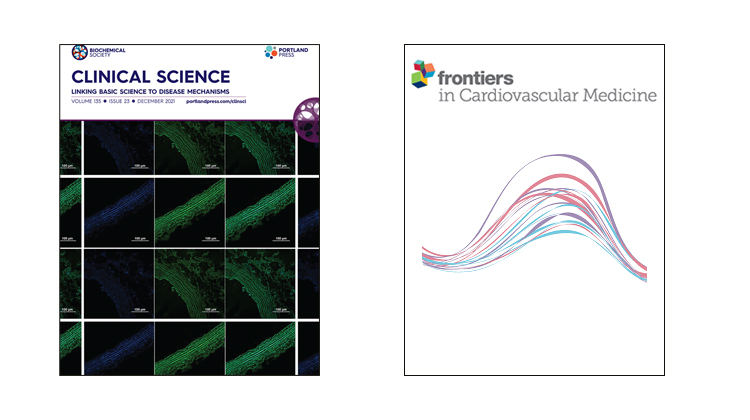L’équipe 5 vient de publier 2 nouveaux articles
+ A2 adenosine receptor subtypes overproduction in atria of perioperative atrial fibrillation patients undergoing cardiac surgery: a pilot study
Objective: Although atrial fibrillation is a common cardiac arrhythmia in humans, the mechanism that leads to the onset of this condition is poorly elucidated. Adenosine is suspected to be implicated in the trigger of atrial fibrillation (AF) through the activation of its membrane receptors, mainly adenosine receptor (AR) subtypes A1R and A2R. In this study, we compared blood adenosine concentration (BAC), and A1R, A2AR, and A2BR production in right (RA) and left atrium (LA), and on peripheral blood mononuclear cells (PBMCs) in patients with underlying structural heart disease undergoing cardiac surgery with or without peri-operative AF (PeOpAF).
Methods: The study group consisted of 39 patients (30 men and 9 women, mean age, range 65 [40–82] years) undergoing cardiac surgery and 20 healthy patients (8 women and 12 men; mean age, range 60 [39–72] years) as controls were included. Among patients, 15 exhibited PeOpAF.
Results: Blood adenosine concentration was higher in patients with PeOpAF than others. A2AR and A2BR production was higher in PBMCs of patients compared with controls and was higher in PeOpAF patients than other patients. In LA and RA, the production of A2AR and A2BR was higher in patients with PeOpAF than in other patients. Both A2AR and A2BR production were higher in LA vs. RA. A1R production was unchanged in all situations. Finally, we observed a correlation between A1R, A2AR, and A2BR production evaluated on PBMCs and those evaluated in LA and RA.
Conclusions: Perioperative AF was associated with high BAC and high A2AR and A2BR expression, especially in the LA, after cardiac surgery in patients with underlying structural heart disease. Whether these increases the favor in triggering the AF in this patient population needs further investigation.
Pour lire l’intégralité du document, rendez-vous sur le lien suivant:
http://journal.frontiersin.org/article/10.3389/fcvm.2021.761164/
+ Hypoxic preconditioning in renal ischaemia-reperfusion injury: a review in pre-clinical models
Ischaemia-reperfusion injury (IRI) is a major cause of acute kidney injury (AKI) and chronic kidney disease, which consists of cellular damage and renal dysfunction. AKI is a major complication that is of particular concern after cardiac surgery and to a lesser degree following organ transplantation in the immediate post-transplantation period, leading to delayed graft function. Because effective therapies are still unavailable, several recent studies have explored the potential benefit of hypoxic preconditioning (HPC) on IRI. HPC refers to the acquisition of increased organ tolerance to subsequent ischaemic or severe hypoxic injury, and experimental evidences suggest a potential benefit of HPC. There are three experimental forms of HPC, and, for better clarity, we named them as follows: physical HPC, HPC via treated-cell administration and stabilized HIF-1α HPC, or mimicked HPC. The purpose of this review is to present the latest developments in the literature on HPC in the context of renal IRI in pre-clinical models. The data we compiled suggest that preconditional activation of hypoxia pathways protects against renal IRI, suggesting that HPC could be used in the treatment of renal IRI in transplantation.
Pour lire l’intégralité du document, rendez-vous sur le lien suivant:
https://doi.org/10.1042/CS20210615
Vous avez des commentaires, des questions sur ce travail ? Nous serons heureux de poursuivre l’échange avec vous.


